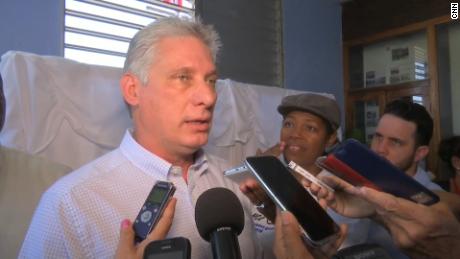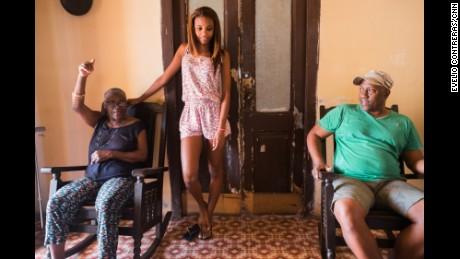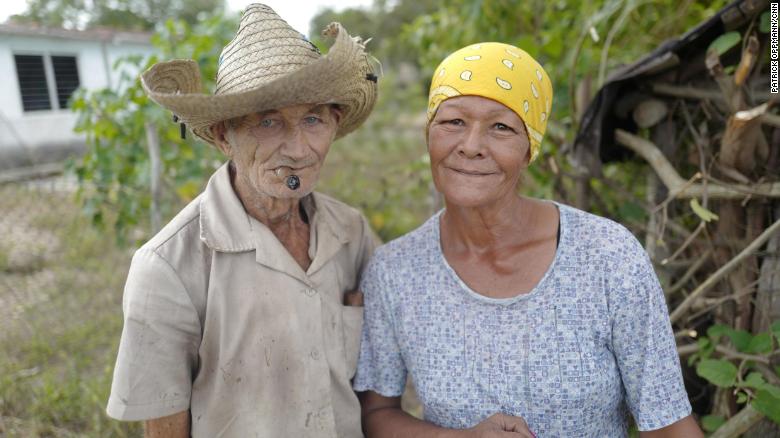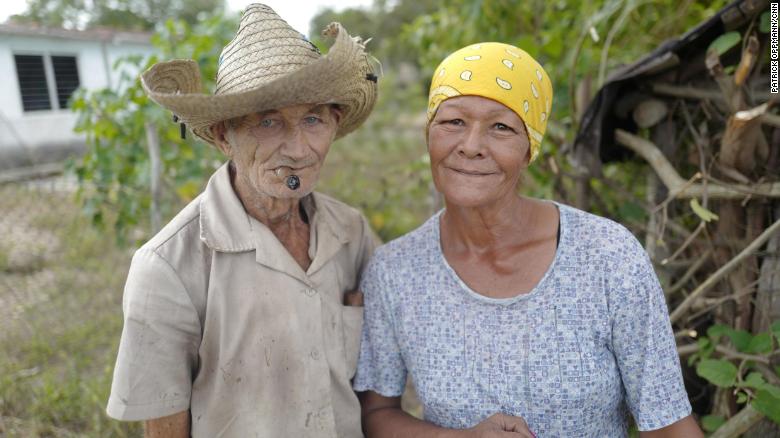Cuba's National Assembly nominates Miguel Diaz-Canel to succeed Raul Castro as president
Havana, Cuba (CNN)For the first time in the lives of most Cubans, a man not named Castro is set to take over the leadership of the Communist-run island nation.
Cuba's National Assembly has nominated Cuban First Vice President Miguel Diaz-Canel to be the unopposed candidate to replace Raul Castro as the head of the Cuban government.
Castro embraced Diaz-Canel -- who wasn't even born when Fidel Castro led his revolution in 1959 -- during the session Wednesday, all but sealing his status as the island's next president.

Play Video
New assembly to choose post-Castro president 02:01
Fidel Castro had long said he expected to die while still in office, but after a mystery illness and botched intestinal surgery in 2008, he was forced to step down. He died in 2016.
His younger brother Raul Castro replaced him as head of state, the Cuban Communist Party and the island's military, promising to make their revolution "prosperous and sustainable."

Play Video
One Cuban family, 3 generations under Fidel 04:43
Now Raul Castro, 86, is leaving office, apparently convinced that the best way to ensure the survival of his and his brother's revolution is to begin a transition he can help oversee.
Photos: Inside Raul Castro's Cuba
A flag hangs from a Havana apartment building on January 1, 2018, the 59th anniversary of the Cuban revolution. The majority of Cubans today were born after the revolution and have only ever known communism and leaders named Castro. When Raul Castro steps down on April 19, his successor is likely to be the first president of Cuba from the post-revolution generation.
Hide Caption
9 of 16
Photos: Inside Raul Castro's Cuba
A boxer from Philadelphia, Pennsylvania, watches matches between US and Cuban fighters in Pinar del Rio, Cuba. After the revolution, Cuba was virtually cut off from the US for decades. Now, despite the countries' ongoing political differences, there are a flurry of cultural exchanges taking place.
Hide Caption
10 of 16
Photos: Inside Raul Castro's Cuba
A Cuban man wheels his possessions in Gibara, Cuba, under a sign quoting Fidel Castro: "A new dawn shall begin to illuminate our future, a future that shall be more brilliant, a Socialism that shall be more refined, a Revolutionary work that will be more promising."
Hide Caption
11 of 16
Photos: Inside Raul Castro's Cuba
Cuban cowboys rope a steer near Santa Clara, Cuba. Despite having more land than any other island in the Caribbean, Cuba imports most of its food. The Cuban agriculture sector has struggled since the collapse of the Soviet Union and is plagued by government inefficiency and shortages. Farmers lack basic equipment and all cattle belong to the state.
Hide Caption
12 of 16
Photos: Inside Raul Castro's Cuba
A protester carrying an American flag runs through Havana's revolution square on May Day 2017 ahead of a government-sponsored parade as plainclothes Cuban security agents try to catch him. International human rights groups criticize the Cuban government for repressing internal dissent. Cuban officials say the island's dissidents are "mercenaries" paid by Washington to stir up trouble.
Hide Caption
13 of 16
Photos: Inside Raul Castro's Cuba
A worker at the Partagas factory in Havana sorts some of Cuba's famed cigars to ensure that each box contains tobacco of the same color. Cuban cigars are still rolled by hand as they have been for generations. For years, Cuban cigars were banned in the US, but as part of his shift in policy toward Cuba, President Obama changed the law to allow US citizens to bring habanos back from trips abroad. The US trade embargo still prohibits the sale of Cuban cigars in the US.
Hide Caption
14 of 16
Photos: Inside Raul Castro's Cuba
A young Cuban girl in her "pioneer" school uniform lights a candle at a Havana church days before the 2015 visit of Pope Francis to Cuba. Religion was all but banned following the Cuban revolution, and Catholics in particular faced government discrimination for openly practicing their faith. Over the last 20 years, the Cuban government has slowly eased restrictions on religion. In 2015, Raul Castro, a longtime atheist, said meeting the Pope made him consider returning to the Catholic church.
Hide Caption
15 of 16
Photos: Inside Raul Castro's Cuba
"Long live Raul," reads a pro-government message written on a wall in Havana. Now 86 years old, Raul Castro will step down as president of Cuba on April 19, 2018. Although he will remain as the powerful first secretary of the Communist Party in Cuba, Castro says it is time for the next generation of supporters of the Cuban revolution to take power.
Hide Caption
16 of 16












